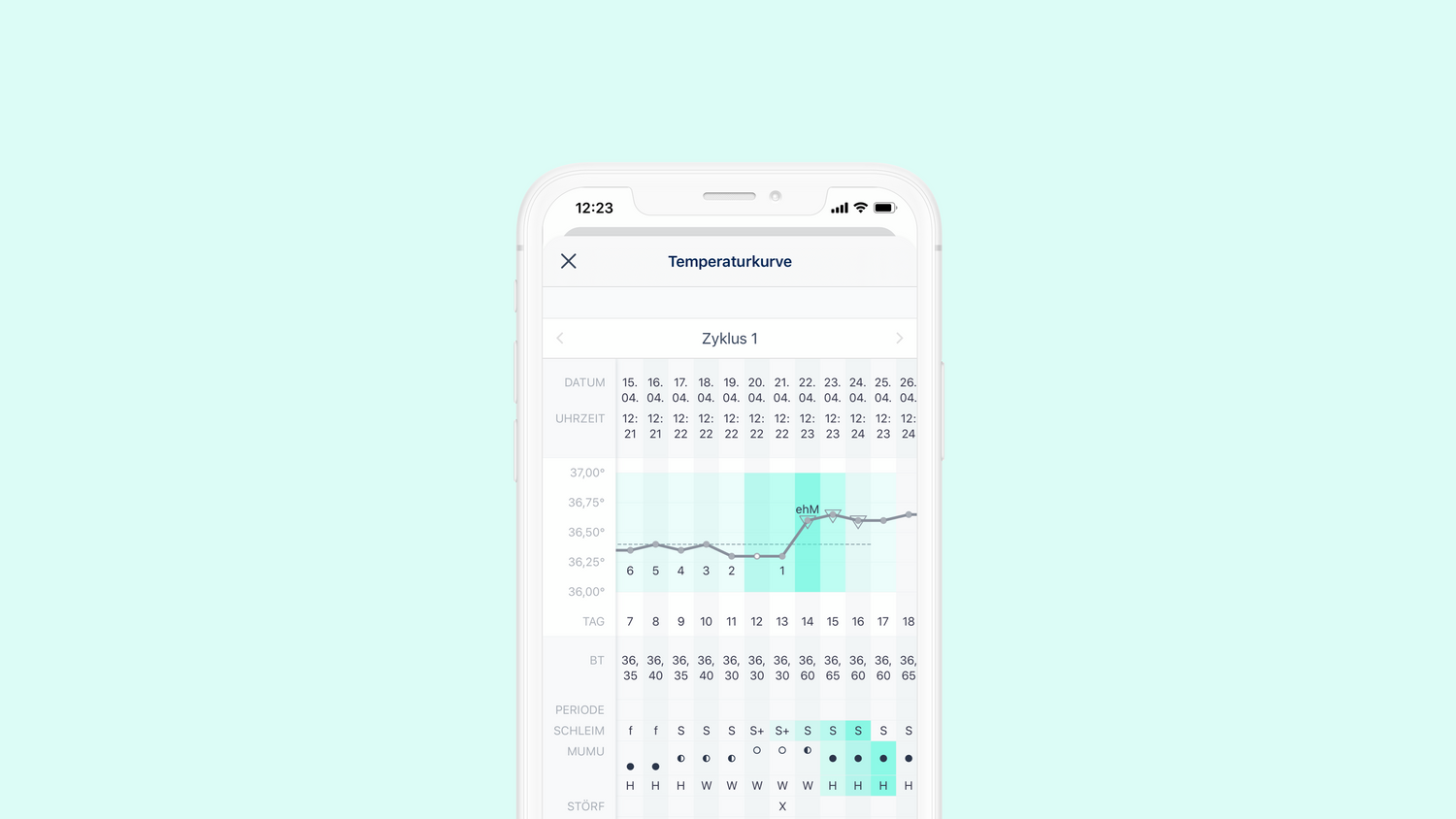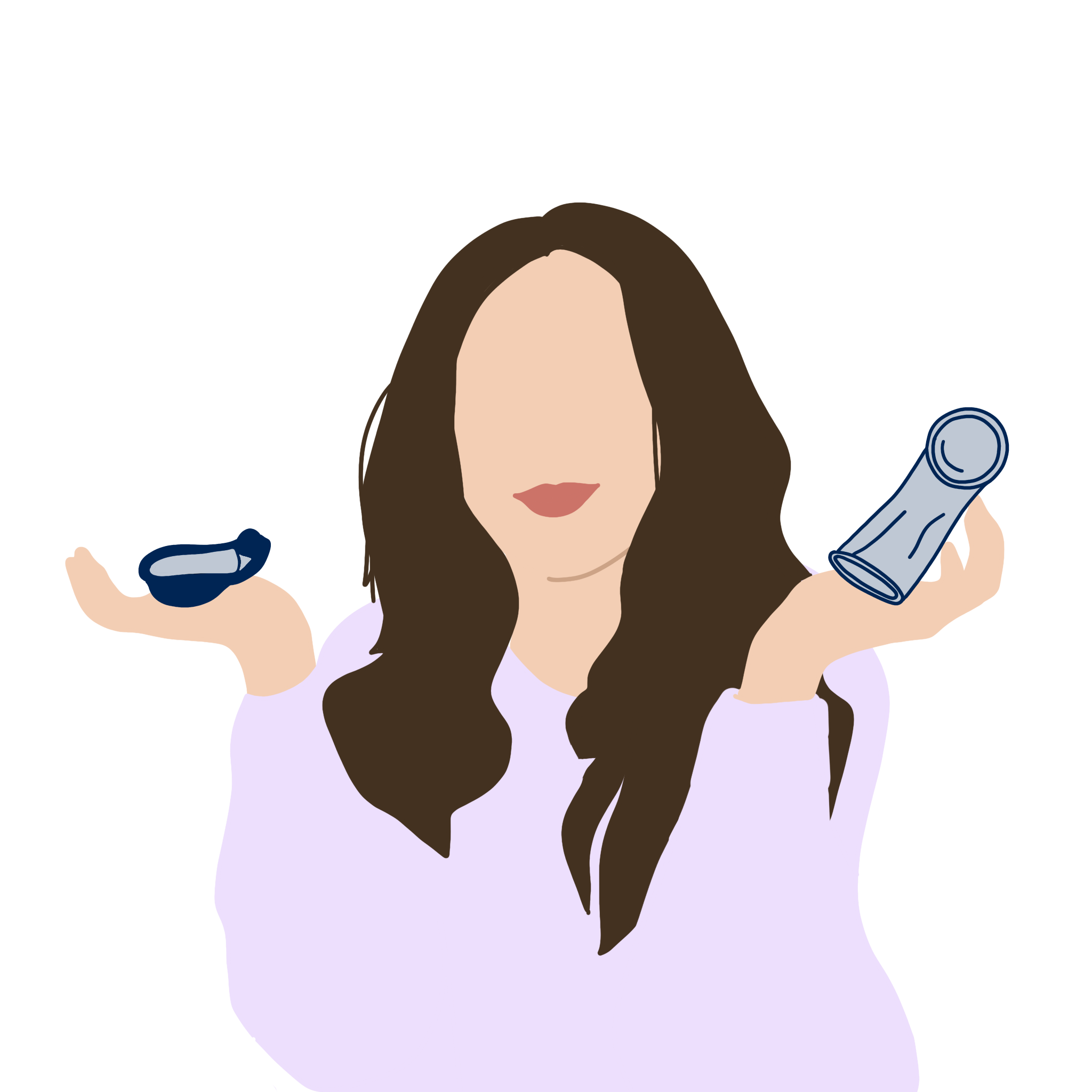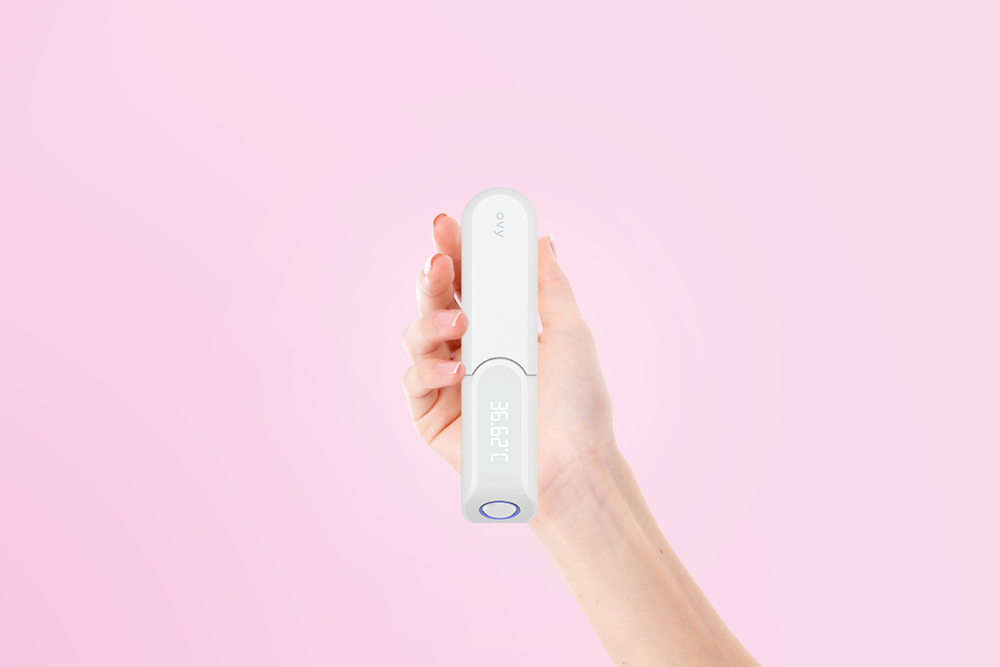Key Takeaways
- Um mit der Ovy App deinen Zyklus zu verfolgen, musst du täglich deine Basaltemperatur und die Zervixschleimqualität eintragen.
- Die Ovy App erstellt dir eine Temperaturkurve, in der deine Körpersignale übersichtlich aufgelistet sind.
- Im Artikel erfährst du, wie du deine Temperaturkurve interpretieren kannst, um herauszufinden, wann du fruchtbar bist.
How can you calculate the timing of ovulation using your basal body temperature? And which factors influence your temperature? Here we explain how to interpret your temperature curve and what the rules behind it mean.
What is the temperature curve?
If you decide to track your cycle naturally, you need to measure your basal body temperature daily. By regularly documenting your basal body temperature — for example, in the Ovy app — a temperature curve emerges, also called a cycle chart. The temperature shift visible in this chart allows you to narrow down when ovulation has occurred.
What is basal body temperature?
Basal body temperature refers to your body’s waking temperature. When your body is at rest during sleep, its temperature drops to a minimum. It’s at its lowest right after waking up. Soon after you wake up, your basal body temperature begins to rise and continues to climb throughout the day. Observing basal body temperature over time provides valuable insights into your fertile days and ovulation.
How do I measure basal body temperature?
To measure basal body temperature, the following rules apply:
-
Take your temperature every morning immediately after waking, before getting out of bed.
-
For meaningful results, at least four hours of sleep per night are required. The tolerance window is four hours. If you sleep longer on the weekend, the measurement is still valid.
-
Ideally, measure for three minutes with a digital basal thermometer that records to two decimal places. If a plateau is reached early, the measurement can be ended. Note: a standard fever thermometer is too imprecise.
-
Within a cycle, do not change the measurement site. Measure orally or vaginally.
-
To avoid forgetting, set a reminder in the Ovy app. If you miss a measurement, just resume the next day.
-
With the Ovy Bluetooth Thermometer, values are transferred automatically to the app. The thermometer times the three minutes for you and signals when complete.
How do hormones affect basal body temperature?
The monthly cycle is regulated by four hormones:
-
FSH (follicle-stimulating hormone)
-
LH (luteinizing hormone)
-
Estrogen
-
Progesterone
Every menstrual cycle begins with the first day of menstruation. In the first half of the cycle — from the start of the period until ovulation — body temperature is lower than in the second half. On the day before ovulation, the temperature briefly drops, before then rising again by 0.2 to 0.5°C. This rise is the indicator that ovulation has taken place.
The luteinizing hormone (LH) triggers ovulation during the first half of the cycle, that is, the release of the egg from the ovary. About 36 hours before ovulation, the level of luteinizing hormone begins to rise, reaching its peak about seven hours before ovulation occurs. On the day of ovulation, the luteinizing hormone level is highest; afterwards it decreases again, and so the temperature also falls.
The follicle-stimulating hormone (FSH) also plays an important role in regulating the female cycle. During the first half of the cycle, it stimulates the growth of the follicles in the ovaries. Within the cycle, the value of the follicle-stimulating hormone varies and reaches its highest level shortly before ovulation. The rise in the level of follicle-stimulating hormone therefore also contributes to the increase in basal body temperature just before ovulation.
Due to the corpus luteum hormone progesterone, basal body temperature is regulated once ovulation has taken place. The body produces progesterone to prepare the lining of the uterus for possible implantation of the fertilized egg. If your basal body temperature is elevated, you can therefore assume that ovulation has occurred.
If you evaluate your cycle according to the symptothermal method, you must also assess an additional body signal for double control: cervical mucus or the cervix itself.
What can disrupt basal body temperature?
Beyond hormonal changes, fluctuations in your temperature curve may occur due to external factors. For example, heavy alcohol consumption the night before, irregular sleep patterns, or illness can affect basal body temperature.
Defined disruptive factors (as listed in the Ovy app) include:
-
Drug use
-
Unusual alcohol consumption
-
Short or disturbed sleep
-
Going to bed later than usual
-
Night sweats or chills
-
Late-night meals
-
Late-night partying
-
Stress and excitement
-
Travel or environmental changes
-
Time changes
-
Colds or other illnesses
These factors should be documented, and the affected values excluded in the app to avoid skewing calculations. Excluded values are automatically handled by the algorithm. Keep in mind: every body reacts differently. Not every factor necessarily causes a temperature rise for every woman*. You need to decide individually whether a value may be distorted.
How can I tell when ovulation has occurred?
As noted, ovulation can be narrowed down using the temperature shift in the curve. For calculation of the fertile phase, six values before and three values after ovulation are relevant. The individual readings reveal ovulation:
-
The day before ovulation, temperature drops briefly, then rises by 0.2 to 0.5°C.
-
Once three consecutive readings are higher than the highest of the six previous days, ovulation has taken place.
-
The third higher reading must be at least 0.2°C above the highest of the six previous values.
How do I read the temperature curve in the Ovy app?
In the Ovy app, you’ll find your cycle chart under the large cycle display on the home screen. Tap to view in detail. The chart summarizes your entries, showing:
-
Date and time of each measurement, plus the cycle day
-
Your basal body temperature (BBT)
-
The temperature curve, usually between 36 and 37°C
-
An overview of other signs such as period, cervical mucus, cervical position, and disruptive factors
What does the horizontal line in the curve mean?
A guideline is drawn at the highest of the six low values before the shift. Two exception rules apply:
-
First exception: If the third higher reading is less than 0.2°C above the highest of the six previous values, a fourth reading is required. This fourth value must be above the guideline, but not necessarily 0.2°C higher.
-
Second exception: During the three higher values, one reading may be at or below the guideline. This value is excluded. In that case, four readings are also needed. These exceptions may not be combined.
How does the curve develop in pregnancy?
If the curve remains elevated after ovulation for several days beyond the expected period, pregnancy is likely. This is because hormonal changes occur after conception.
References & Literature
- MedlinePlus.gov





